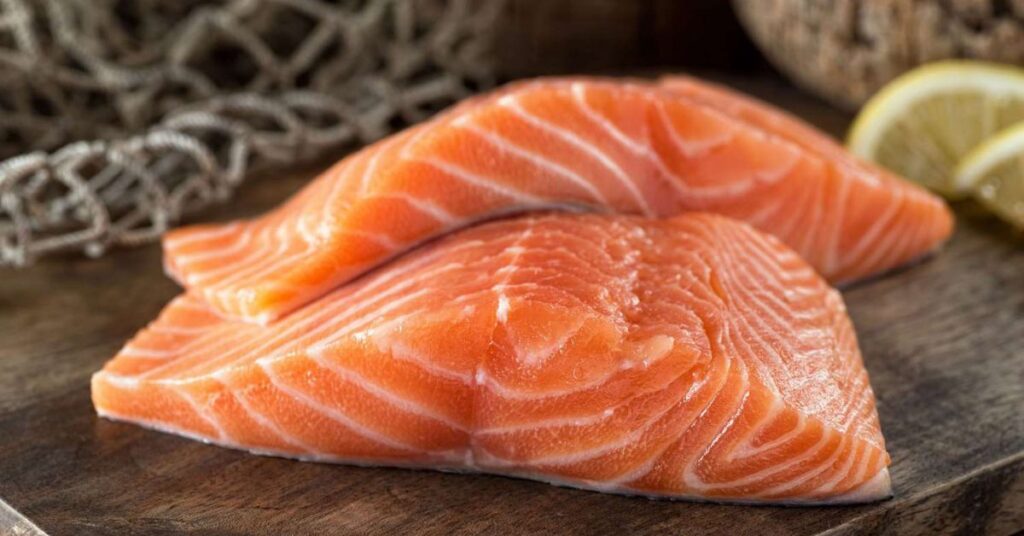Are you a seafood lover curious about the various types of salmon available? Do you want to know which type of salmon is best for your recipes or nutritional needs? Understanding the different types of salmon can enhance your culinary experiences and improve your health. In this article, we will explore the various types of salmon, their characteristics, flavors, nutritional benefits, and culinary uses. Whether you prefer wild-caught or farmed salmon, there is a type that suits your taste and dietary requirements.
What Are the Different Types of Salmon?
When discussing the types of salmon, it’s important to recognize that they fall into two main categories: wild-caught and farmed. Each category includes various species that differ in taste, texture, and nutritional value. Here’s a breakdown of the most popular types of salmon you can find in markets and restaurants.
1. Chinook Salmon (King Salmon)
Chinook salmon, also known as king salmon, is the largest and most prized type of salmon. It is renowned for its rich, buttery flavor and high-fat content, making it an ideal choice for grilling, baking, or smoking. Chinook salmon can weigh over 100 pounds and can reach lengths of up to five feet, though most caught range between 10 to 50 pounds.
Characteristics:
- Color: Ranges from pale pink to deep red, with a high oil content.
- Flavor: Rich and buttery, often described as the most flavorful type of salmon.
- Nutritional Value: High in omega-3 fatty acids, vitamin D, and protein.
Chinook salmon is often considered the best type of salmon for sashimi due to its tender texture and rich flavor. It’s a versatile fish that can be prepared in various ways, including grilling, baking, and poaching.
2. Coho Salmon (Silver Salmon)
Coho salmon, commonly referred to as silver salmon, is a popular choice among seafood enthusiasts for its bright, vibrant color and firm texture. Coho salmon typically weighs between 8 to 12 pounds and has a medium-fat content, making it a great option for grilling, broiling, or making fish tacos.
Characteristics:
- Color: Bright orange to red flesh, with a milder flavor than Chinook.
- Flavor: Mildly rich and slightly sweet, making it versatile in various dishes.
- Nutritional Value: Good source of omega-3 fatty acids, protein, and B vitamins.
Coho salmon is often used in dishes that highlight its flavor, such as in salads, sushi, or smoked salmon spreads. Its versatility and palatable taste make it a favorite among home cooks and chefs alike.
3. Sockeye Salmon (Red Salmon)
Sockeye salmon is known for its vibrant red flesh and robust flavor. It is smaller than Chinook and Coho salmon, usually weighing between 5 to 15 pounds. Sockeye is often recognized for its distinctive color and is highly sought after for its flavor and health benefits.
Characteristics:
- Color: Bright red flesh, which deepens when cooked.
- Flavor: Strong, rich flavor that is often described as the most intense of the types of salmon.
- Nutritional Value: High in omega-3 fatty acids, protein, and antioxidants.
Sockeye salmon is perfect for grilling, baking, or even canning due to its firm texture and rich taste. It is also a popular choice for creating flavorful salmon patties or burgers.
4. Pink Salmon (Humpback Salmon)
Pink salmon is the smallest and most abundant species of salmon, typically weighing between 3 to 5 pounds. It has a mild flavor and a lighter color than other types of salmon, making it a popular choice for canning and processing.
Characteristics:
- Color: Pale pink flesh with a delicate texture.
- Flavor: Mild and slightly sweet, often used in recipes requiring lighter fish.
- Nutritional Value: Lower in fat compared to other salmon varieties, making it a healthy choice.
Pink salmon is often used in canned products and is a common ingredient in salmon salads, dips, and pâtés. Its milder flavor makes it less ideal for grilling but perfect for recipes where the salmon flavor is complemented by other ingredients.
5. Chum Salmon (Dog Salmon)
Chum salmon, also known as dog salmon, is often overlooked but offers a unique flavor profile. It typically weighs between 5 to 15 pounds and is recognized for its lower fat content compared to other types of salmon.
Characteristics:
- Color: Light pink to pale flesh, with a slightly firmer texture.
- Flavor: Milder and less rich than other salmon types, with a slightly sweet undertone.
- Nutritional Value: High in protein and lower in fat, making it a lean option.
Chum salmon is often used for smoking due to its firmer texture, making it suitable for jerky or gravlax. Its lower fat content makes it a healthier alternative, especially for those watching their fat intake.
Nutritional Benefits of Salmon
Salmon is widely regarded as a superfood due to its impressive nutritional profile. All types of salmon provide numerous health benefits, making it an excellent choice for a balanced diet.
Rich in Omega-3 Fatty Acids
One of the most significant benefits of salmon is its high omega-3 fatty acid content, which is essential for heart health, brain function, and reducing inflammation. Omega-3s are known to lower the risk of heart disease, improve cholesterol levels, and support cognitive function.
High-Quality Protein Source
Salmon is an excellent source of high-quality protein, which is crucial for muscle growth, tissue repair, and overall bodily function. Including salmon in your diet can help you meet your daily protein requirements, especially for those following a fitness regimen.
Packed with Vitamins and Minerals
Salmon is rich in essential vitamins and minerals, including:
- Vitamin D: Supports bone health and immune function.
- Vitamin B12: Essential for nerve function and the production of DNA and red blood cells.
- Selenium: Acts as an antioxidant, helping to protect the body from oxidative stress.
Culinary Uses of Salmon
The versatility of salmon makes it a favorite among chefs and home cooks alike. Here are some popular culinary uses for different types of salmon:
Grilling
Grilling is a popular method for cooking salmon, particularly for Chinook and Coho varieties. The high-fat content of these fish helps keep them moist and flavorful. A simple marinade of olive oil, lemon juice, and herbs can elevate the taste while allowing the natural flavors of the salmon to shine.
Baking
Baking salmon is another great option, especially for Sockeye and Pink salmon. Baking allows for even cooking while retaining moisture. You can top it with breadcrumbs, cheese, or a glaze for added flavor.
Smoking
Smoking is an excellent method for preserving salmon and enhancing its flavor. Chum salmon is often used for smoking due to its firmer texture. Smoked salmon can be enjoyed on bagels, in salads, or as part of a charcuterie board.
Canning
Canned salmon is an affordable and convenient option that retains much of the fish’s nutritional value. Pink salmon is commonly used for canning due to its mild flavor and lower cost. Canned salmon can be used in salads, pasta dishes, or salmon patties.
Selecting the Right Type of Salmon
When choosing salmon, consider your cooking method and personal taste preferences. Here are some tips for selecting the right type of salmon:
Freshness Matters
Always look for fresh salmon with a bright, moist appearance. The flesh should be firm and spring back when pressed. Fresh salmon should have a mild scent, not a strong fishy odor.
Consider Sustainability
If you’re concerned about sustainability, look for salmon that is certified by organizations such as the Marine Stewardship Council (MSC) or the Aquaculture Stewardship Council (ASC). These certifications ensure that the fish is sourced responsibly.
Wild-Caught vs. Farmed
While both wild-caught and farmed salmon offer health benefits, they differ in flavor and texture. Wild-caught salmon tends to have a richer flavor and firmer texture, while farmed salmon is generally milder and fattier. Your choice will depend on your taste preferences and budget.
Conclusion
Understanding the various types of salmon can enhance your culinary adventures and improve your overall health. Each type offers unique flavors, textures, and nutritional benefits, allowing you to experiment in the kitchen and discover what you enjoy most. Whether you opt for the rich and buttery Chinook or the mild and versatile Pink salmon, incorporating salmon into your diet is a delicious way to enjoy this nutritious fish.
As you explore the world of salmon, remember to consider sustainability and freshness to ensure you’re making the best choices for your health and the environment. So, which type of salmon will you try next?







